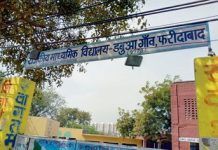Banking on cutting-edge technology, the Culture Ministry has envisioned a plan to digitally map boundaries of over 3,600 centrally-protected monuments for greater security and checking encroachment through enhanced monitoring of these sites.
Union Culture Minister G Kishan Reddy has said technology giant Google could help the government in doing this job, and talks are “in the pipeline”. There are a total of 3,693 heritage sites in India protected under the Archaeological Survey of India that fall within the purview of the ministry.
In continuation of the decade-long partnership between the Ministry of Culture and Google, a project named ‘India ki Udaan’ was unveiled at a glittering event at the Sunder Nursery here to mark the ‘Azadi ka Amrit Mahotsav’, which captures several milestones India has achieved in its journey of 75 years since Independence, as also celebrates the legacy of iconic personalities.
The project executed by Google Arts & Culture, celebrates the country’s achievements, and is “themed on the unwavering and undying spirit of India over these past 75 years”. It draws from rich archives and features artistic illustrations to tell the story of the country. In his address at the event, Reddy also said Google could help the culture ministry in digital mapping the boundaries of its over 3,600 centrally-protected monuments that will help in better monitoring of sites and check any encroachment. As also, Google can help in digitisation of rare archival material, he said.
“Therefore, we urge the Google team to be a partner in the government’s transformative journey, as also promote India’s tourism destinations,” Reddy said. Later speaking to PTI on the sidelines of the event, the Union Culture Minister said, “A lot of manpower is required in monitoring the sites. So, through technology we can easily map the sites for security purposes and to check encroachment”.
Reddy said what the ministry has envisioned is that through cutting-edge technology, these sites can be monitored from the headquarters in New Delhi. “So, we can monitor every monument, and what is going on there, sitting in Delhi. That is what we want to do,” he said, adding, things are in the pipeline with Google, and “they are going to meet us, and we will discuss it in detail”.








